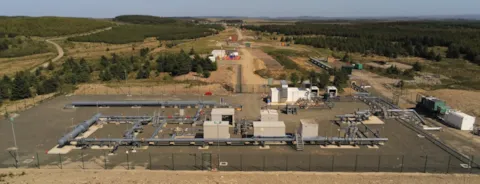National Gas explores the potential of digital twins to manage complexity in the energy transition
Digital twin of FutureGrid test facility demonstrates feasibility of managing introduction of hydrogen to gas networks
National Gas is responsible for the United Kingdom’s gas transmission infrastructure, providing energy security for over 23 million homes and 210,000 businesses across the region. Its transmission arm owns and operates Britain’s 7,600 km-long National Transmission System (NTS), ensuring the safe, reliable and affordable transportation of gas to heat homes, fuel industry and generate electricity. It also invests to futureproof Britain, with projects to integrate hydrogen in the UK’s energy mix.
As part of their environmental commitments, nations around the globe are looking to decarbonize their energy systems. Transitioning from natural gas to hydrogen and other green gases is seen as the quickest and cheapest path to reducing the carbon footprint of home heating, transport and certain industrial processes.
Managing complexity to realize the benefits
Today’s gas networks were developed almost exclusively for natural gas. While the environmental and climate benefits of using hydrogen as a low-carbon fuel are clear, the feasibility of making the transition using the current infrastructure still needs to be demonstrated. Before introducing hydrogen into the existing national gas system operators such as National Gas need to understand the impact of the cleaner gas on pipes and assets to ensure safe, efficient and cost effectiveness operations.
Showcasing the trustworthiness of digital twins
DNV has been working with National Gas to establish the feasibility of using hydrogen, building the ambitious FutureGrid hydrogen test facility at DNV’s site in Cumbria, UK. Both DNV and National Gas believe that the best way to manage the complexity that hydrogen brings is through a “digital twin” – a virtual representation of a system that covers its whole lifecycle.
As part of a “digital and data first” policy, the FutureGrid facility has been designed to include hundreds of sensors to capture real-time data on the operation of the test system. This is passed via the cloud to the digital twin which uses simulation and machine learning to support decision making. This allows the operators to see the impact of their decisions before they are implemented on the physical system and helps them to make more robust asset management decisions and predictions on future scenarios as well as conducting risk analysis before physical implementation. Once the feasibility of the FutureGrid digital twin is established, it should be possible to connect it to digital twins of other key infrastructure across the country and eventually manage entire national energy systems via a network of digital twins.
Download National Gas' story to learn more
Impact
- Demonstrates that digital twin technology provides a robust, cost-effective solution for managing hydrogen within current gas infrastructure
- Greater data visibility allows smart operational, strategic and investment decisions to be made faster
- Supports long-term UK goal of connecting hydrogen production, storage and demand to enable net zero and empower a UK hydrogen economy


